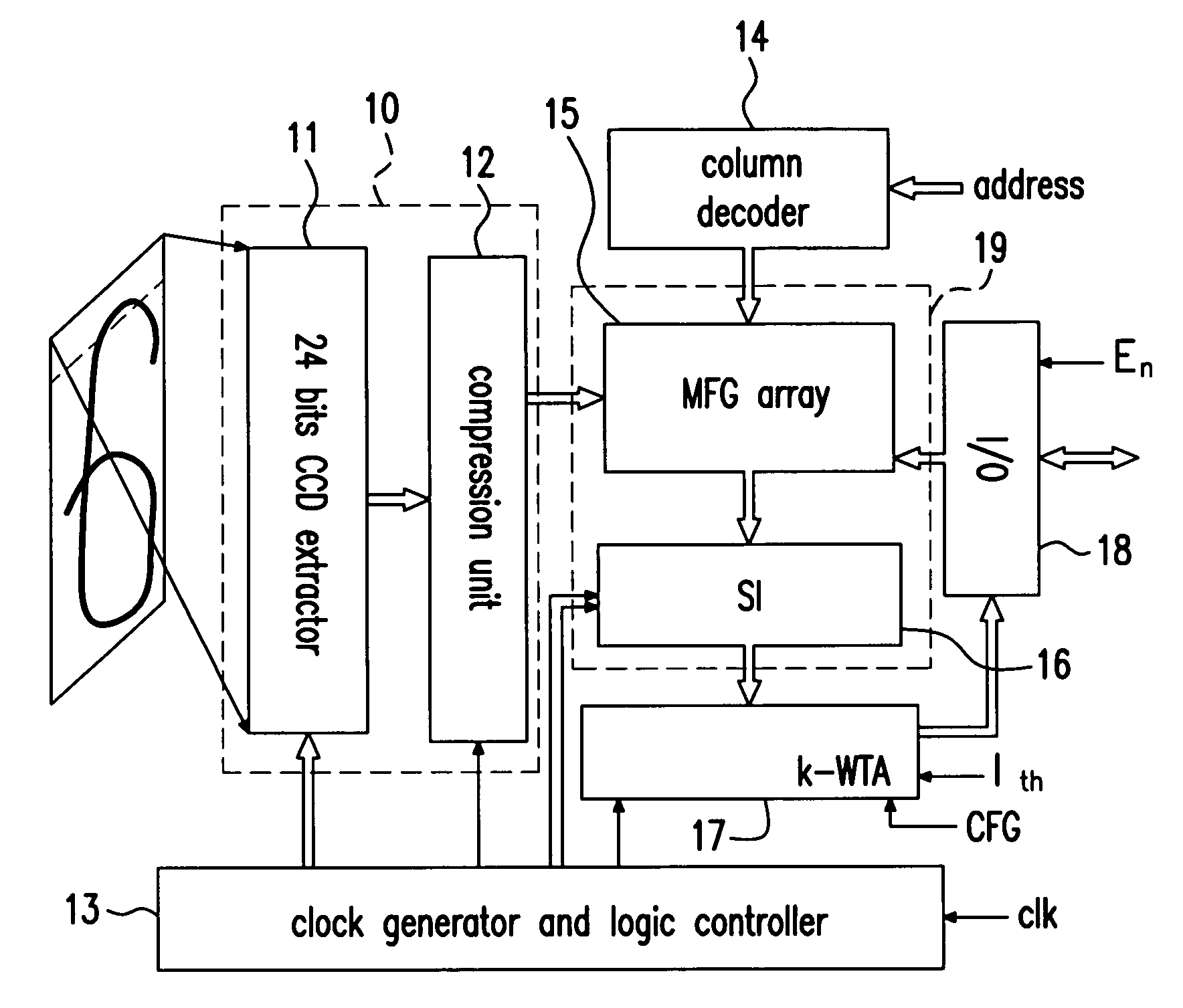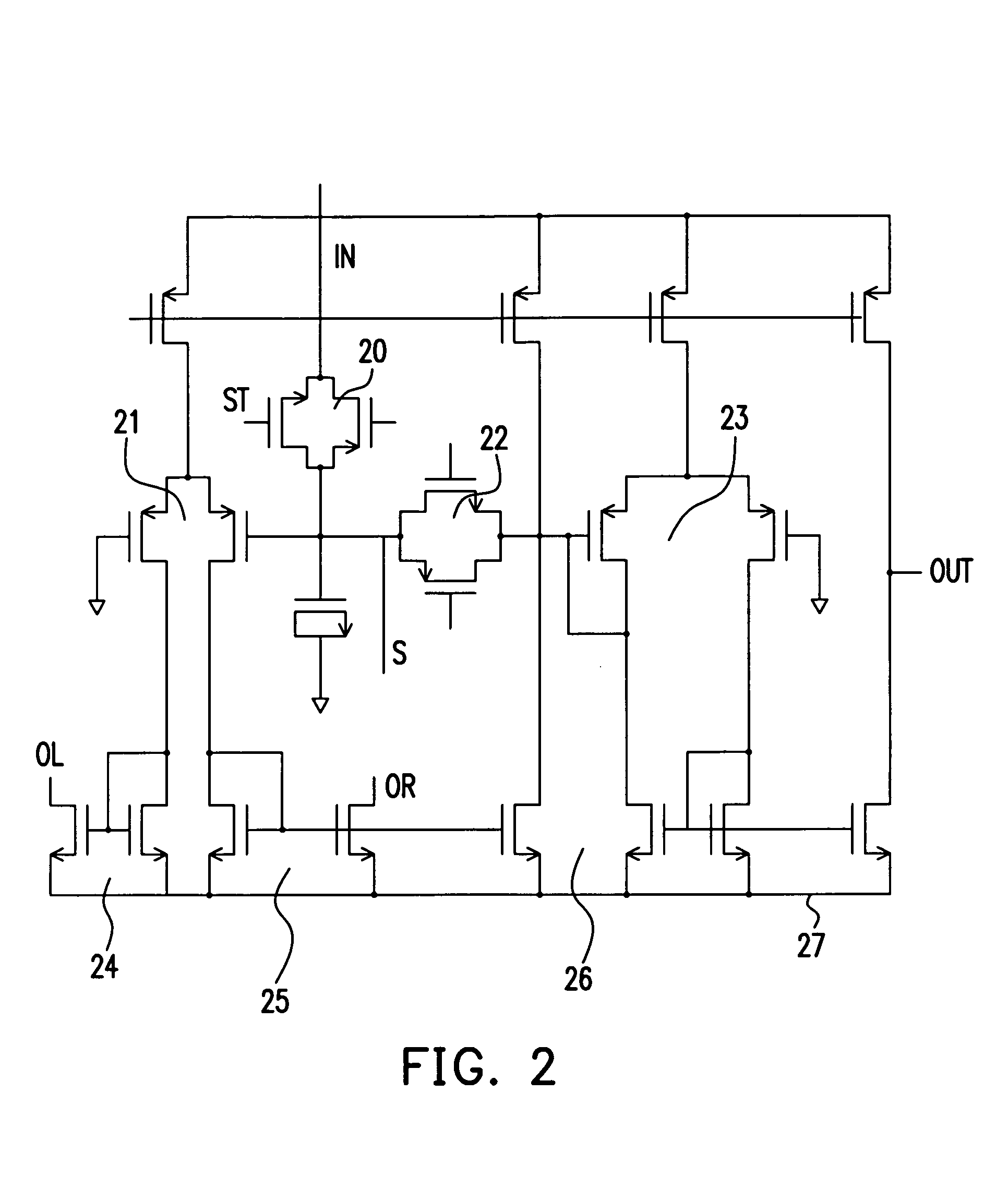VLSI neural fuzzy classifier for handwriting recognition
a classifier and handwriting technology, applied in the field of handwriting recognition devices, can solve the problems of device failure to recognize handwritten characters, device failure to perform handwritten character translation, and device failure to meet the needs of handwriting recognition,
- Summary
- Abstract
- Description
- Claims
- Application Information
AI Technical Summary
Benefits of technology
Problems solved by technology
Method used
Image
Examples
Embodiment Construction
[0025]Please refer to FIG. 1, the structure of the neural-fuzzy classifier of the present invention for handwriting recognition is illustrated, which comprises an extraction unit 10, a membership function generator 19, a clock generator and logic controller 13, a column decoder 14, an I / O circuit 18, and k-WTA circuit 17, wherein the I / O circuit 18, and k-WTA circuit 17 have 11 ports. The extraction unit 10 further comprises a CCD extractor 11 and a compression unit 12, wherein the CCD extractor is 24 bits. The membership function generator 19 further comprises a 10×10 programmable membership function generator (MFG) array 15, and a SI integrator 16, wherein the SI integrator 16 has 10 switches. In the membership function generator 19, the weighted-sum synthetic membership function used is shown in equation (2):
[0026]μ(X)=∑j=1Jwij∑k=1Kmjk.xxμijk(mk)
Where i=1, 2, . . . , N is the index of class number, J is the number of feature groups, Wij is the weight of the jth gr...
PUM
 Login to View More
Login to View More Abstract
Description
Claims
Application Information
 Login to View More
Login to View More - R&D
- Intellectual Property
- Life Sciences
- Materials
- Tech Scout
- Unparalleled Data Quality
- Higher Quality Content
- 60% Fewer Hallucinations
Browse by: Latest US Patents, China's latest patents, Technical Efficacy Thesaurus, Application Domain, Technology Topic, Popular Technical Reports.
© 2025 PatSnap. All rights reserved.Legal|Privacy policy|Modern Slavery Act Transparency Statement|Sitemap|About US| Contact US: help@patsnap.com



